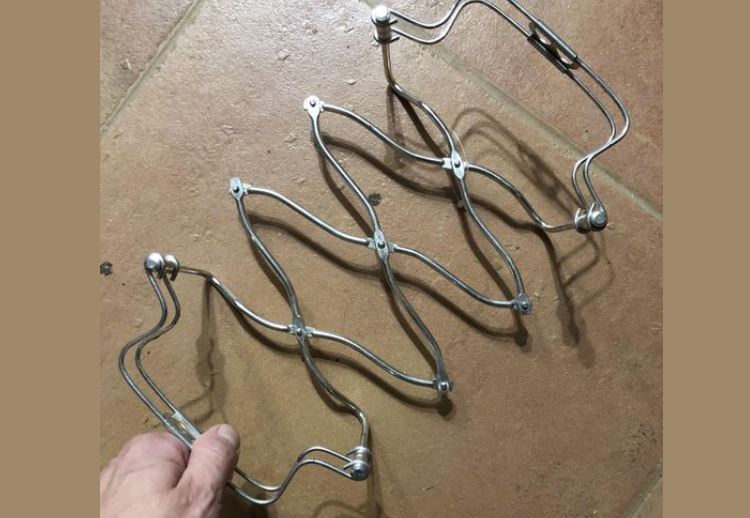A peculiar stainless steel item found at a thrift store has sparked curiosity. Bearing the inscription “Made in Italy” and boasting a durable design, this accordion-like object compresses and extends with ease. Its intriguing features have led to a fascinating discovery about its origins and purpose.
The vintage casserole caddy trivet, typically crafted from expandable metal wire, emerged as a practical kitchen accessory in the mid-20th century. Home cooks of that era sought innovative solutions to make serving and storing hot dishes more convenient and stylish. The caddy’s wireframe structure, designed to accommodate various casserole dish sizes, exemplifies the era’s focus on functionality and aesthetics.
The primary function of the casserole caddy trivet was to provide a stable, heat-resistant surface for serving hot dishes directly from the oven or stove to the table. Its expandable feature allowed it to fit a range of dish sizes, making it versatile for different cooking needs. The metal wire construction protected countertops and tables from heat damage, while raised edges prevented dishes from sliding. Additionally, the caddy served as a decorative element, adding vintage charm to meal presentations.
The legacy of the vintage casserole caddy trivet lies in its harmonious blend of practicality and design. As a symbol of mid-20th-century kitchen innovation, it represents a time when functionality and aesthetics were seamlessly integrated into home cooking tools. The caddy’s durable metal construction and expandable feature have ensured its lasting appeal, making it a sought-after item for collectors and vintage enthusiasts.
Today, these trivets are cherished not only for their utility but also for their nostalgic value, reflecting a bygone era of kitchen design. The vintage casserole caddy continues to be celebrated for its unique combination of form and function, serving as a reminder of the craftsmanship and ingenuity of past generations.


